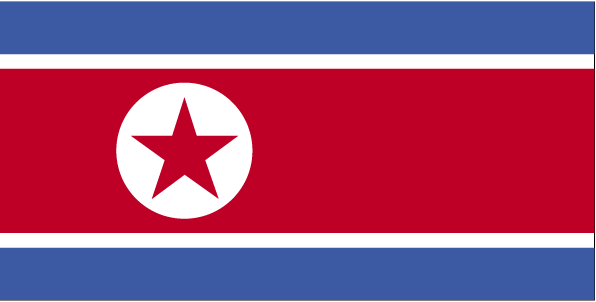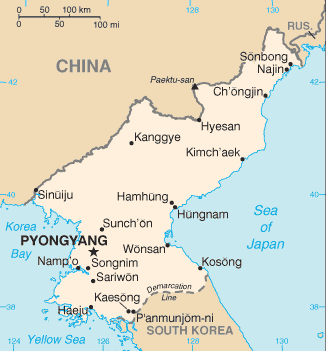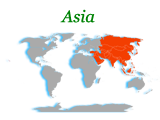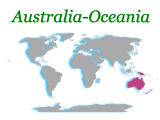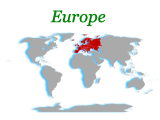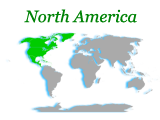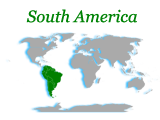An independent kingdom for much of its long history, Korea was occupied by Japan beginning in 1905 following the Russo-Japanese War. Five years later, Japan formally annexed the entire peninsula. Following World War II, Korea was split with the northern half coming under Soviet-sponsored Communist control. After failing in the Korean War (1950-53) to conquer the US-backed Republic of Korea (ROK) in the southern portion by force, North Korea (DPRK), under its founder President KIM Il Sung, adopted a policy of ostensible diplomatic and economic "self-reliance" as a check against outside influence. The DPRK demonized the US as the ultimate threat to its social system through state-funded propaganda, and molded political, economic, and military policies around the core ideological objective of eventual unification of Korea under Pyongyang's control. KIM's son, the current ruler KIM Jong Il, was officially designated as his father's successor in 1980, assuming a growing political and managerial role until the elder KIM's death in 1994. After decades of economic mismanagement and resource misallocation, the DPRK since the mid-1990s has relied heavily on international aid to feed its population. North Korea's history of regional military provocations, proliferation of military-related items, long-range missile development, WMD programs including tests of nuclear devices in 2006 and 2009, and massive conventional armed forces are of major concern to the international community.
Locaion
Eastern Asia, northern half of the Korean Peninsula bordering the Korea Bay and the Sea of Japan, between China and South Korea
Geographic Co ordinates
40 00 N, 127 00 E
Land Boundries
Total:1,673 km
Border countries:China 1,416 km, South Korea 238 km, Russia 19 km
Geography - note
strategic location bordering China, South Korea, and Russia; mountainous interior is isolated and sparsely populated
Country Name
Conventional long form:Democratic People's Republic of Korea
Conventional short form:North Korea
Local long form:Choson-minjujuui-inmin-konghwaguk
Local short form:Choson
abbreviation: DPRK
Government Type
Communist state one-man dictatorship
Capital
Name:Pyongyang
Geographic coordinates:39 01 N, 125 45 E
Time difference:UTC+9 (14 hours ahead of Washington, DC during Standard Time)
Administrative divisions
9 provinces (do, singular and plural) and 2 municipalities (si, singular and plural)
provinces: Chagang-do (Chagang), Hamgyong-bukto (North Hamgyong), Hamgyong-namdo (South Hamgyong), Hwanghae-bukto (North Hwanghae), Hwanghae-namdo (South Hwanghae), Kangwon-do (Kangwon), P'yongan-bukto (North P'yongan), P'yongan-namdo (South P'yongan), Yanggang-do (Yanggang)
municipalities: Nason-si, P'yongyang-si
Independence
15 August 1945 (from Japan)
National Holiday
Founding of the Democratic People's Republic of Korea (DPRK), 9 September (1948)
Constitution
adopted 1948; revised several times most recently in 2009
Legal system
based on Prussian civil law system with Japanese influences and Communist legal theory; no judicial review of legislative acts; has not accepted compulsory ICJ jurisdiction
Suffrage
17 years of age; universal
Executive branch
Chief of state:KIM Jong Il (since July 1994); note - on 9 April 2009, rubberstamp Supreme People's Assembly (SPA) reelected KIM Jong Il chairman of the National Defense Commission, a position accorded nation's "highest administrative authority"; SPA reelected KIM Yong Nam in 2009 president of its Presidium also with responsibility of representing state and receiving diplomatic credentials
Head of government:Premier KIM Yong Il (since 11 April 2007); Vice Premier KWAK Pom Gi (since 5 September 1998), Vice Premier O Su Yong (since 13 April 2009), Vice Premier PAK Su Gil (since 18 September 2009), Vice Premier PAK Myong Su (since 4 September 2009), Vice Premier RO Tu Chol (since 3 September 2003)
Cabinet:Naegak (cabinet) members, except for Minister of People's Armed Forces, are appointed by SPA
(For more information visit the World Leaders website)
Elections:last election held in September 2003; date of next election NA
Election results:KIM Jong Il and KIM Yong Nam were only nominees for positions and ran unopposed
Legislative branch
unicameral Supreme People's Assembly or Ch'oego Inmin Hoeui (687 seats; members elected by popular vote to serve five-year terms)
Elections: last held on 8 March 2009 (next to be held in March 2014)
Election results:percent of vote by party - NA; seats by party - NA; ruling party approves a list of candidates who are elected without opposition; a token number of seats are reserved for minor parties
Judicial branch
Central Court (judges are elected by the Supreme People's Assembly)
Political Parties and Leaders
major party - Korean Workers' Party or KWP [KIM Jong Il]; minor parties - Chondoist Chongu Party [RYU Mi Yong] (under KWP control), Social Democratic Party [KIM Yong Dae] (under KWP control)
Political pressure groups and leaders
none
International organization participation
ARF, FAO, G-77, ICAO, ICRM, IFAD, IFRCS, IHO, IMO, IOC, IPU, ISO, ITSO, ITU, NAM, UN, UNCTAD, UNESCO, UNIDO, UNWTO, UPU, WFTU, WHO, WIPO, WMO
Diplomatic representation in the US
none; North Korea has a Permanent Mission to the UN in New York
Diplomatic representation from the US
none; note - Swedish Embassy in Pyongyang represents the US as consular protecting power
Flag description
three horizontal bands of blue (top), red (triple width), and blue; the red band is edged in white; on the hoist side of the red band is a white disk with a red five-pointed star
